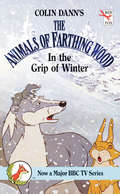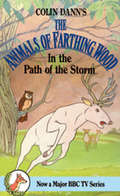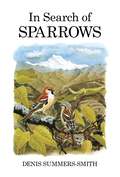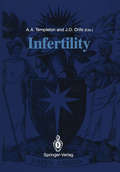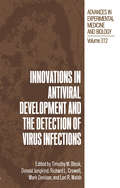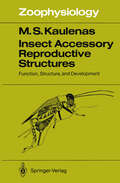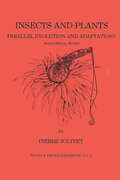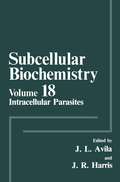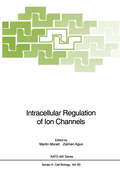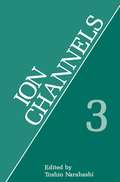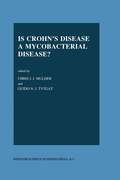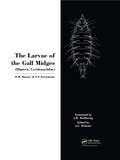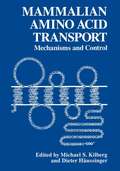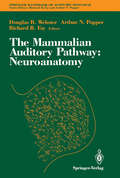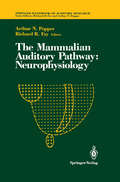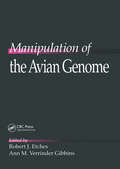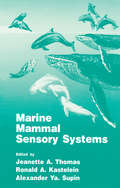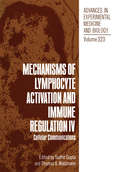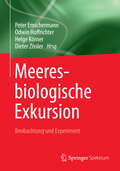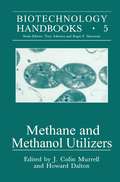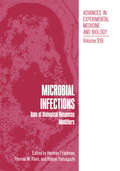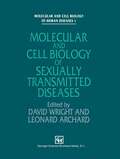- Table View
- List View
In The Grip Of Winter: "in The Grip Of Winter", "fox's Feud" And "fox Cub Bold" (The\farthing Wood Ser. #Vol. 2)
by Colin DannIn the depths of winter, with snow thick on the ground, Badger lies alone and injured. No one knows where he is, and the icy cold is tightening its grip every second.What will happen to Badger? And can the other animals of Farthing Wood survive the harsh cold and piercing hunger that winter has brought?
In The Path Of The Storm (The\farthing Wood Ser. #Vol. 6)
by Colin Dann'I mean to be not only the leadero f the deer herd but Lord of the Reserve. So you must stay in your corner of the Park, all of you... otherwise you'll be permitted here no longer.'Trey, the new leader of the deer herd of White Deer Park, has decided that there is no room for the smaller animals in the reserve.The future looks very bleak for Badger, Adder, Owl and the others - and then the night of the great storm brings more danger . . .
In Search of Sparrows (Poyser Monographs #95)
by Denis Summers-SmithDenis Summers-Smith first took up the study of the House Sparrow in 1947, thinking that the difficulties of travel in post-war Britain would best suit the study of a species always close at hand. The humble House Sparrow, common everywhere, was surprisingly poorly researched and his work soon provided interesting insights into this successful and adaptable little bird. As new opportunities to travel opened up, his interest blossomed to take in the genus Passer as a whole. His travels would ultimately lead to his study of all but one group, found only in the deepest Turkestan, and to the publication of his authoritative monograph on sparrows in 1988.While that book presented his knowledge of sparrow biology, this volume tells the other, human, side of the tale. His wry descriptions of the tribulations and unexpected pleasures of a traveller on four continents, from the Himalayas and Thailand, to Africa and the Americas (with a good few islands in between) are interspersed with observations and speculations on the biology of sparrows in a wide variety of habitats. Everywhere local officials and birdwatchers warmed to the eccentric Scot in pursuit of the little birds that nobody notices but which so often make their homes beside us.The author's own photographs and delightful cartoons by Euan Dunn further paint the picture of this lifelong search.
Infertility
by Allan A. Templeton James O. DrifeInfertility, as with many aspects of medicine, is at the mercy of rapid technological advance. Many of these developments initially seem attractive to both clinicians and patients, but need to be rigorously assessed if their real value is to be understood and clinical practice is to develop. In this book issues of importance to the management of infertile patients are discussed. The gaps in our knowledge which prevent a better understanding of the condition are identified, and recent developments, both clinical and scientific, are subjected to peer review and discussion. An important feature of the book is an acceptance that training in infertility practice is a real problem. This is perceived not only by the practising clinicians, both doctors and nurses, but particularly by the clinical scientists, including embryologists, who now provide such an essential part of the service. Similarly the provision of the clinical service has been examined in detail from a variety of standpoints, in an attempt to make sensible recommendations which balance real need with limited resource. The book is based on the papers presented and discussed at the 25th RCOG Study Group held in April 1992. The discussion after each paper was civilised but uncompromising and forms an important part of this publication. The rapid processing of the written and recorded material by the staff at the RCOG, and particularly Miss Sally Barber, has ensured that the book has been produced while the issues are live, the reviews contemporary and the discussion relevant.
Innovations in Antiviral Development and the Detection of Virus Infections (Advances in Experimental Medicine and Biology #312)
by Timothy Block Richard Crowell Mark Dennison Donald L. Jungkind Lori R. WalshTHE ERA OF ANTIVIRALS Introduction Although there are more than one hundred medically useful antibiotics and fungicides, there are only seven compounds licensed for use as antiviral agents, in the USA. Some of these (acyclovir and ganciclovir) are actually derivatives of each other, making the number of new discoveries even smaller. Moreover, most of these agents are of only limited therapeutic value and have substantial toxicity. It has been more than 100 years ago since Pasteur studied rabies virus (2) and Rous (4) showed that a small filterable agent (not bacteria) caused disease (sarcoma) in chickens. It was nearly 100 years ago that yellow fever virus, the first recognized human pathogenic virus, was unambiguously associated with disease (3). Enteroviruses were cultured for the first time nearly 50 years ago (1). Why then has effective chemotherapy against viruses lagged behind that of other microorganisms? Viruses are often difficult to grow and image. However, with the dynamic advances in molecular biology and increased sophistication in tissue culture, the field of virology has blossomed and resulted in improved methods for detection of virus infection. The use of viruses as models of gene regulation and replication has also resulted in a massive accumulation of information.
Insect Accessory Reproductive Structures: Function, Structure, and Development (Zoophysiology #31)
by M.S. KaulenasIn retrospect, the range of topics covered in this monograph, although forming a coherent ensemble, is so extensive that a detailed discussion could easily extend to three or four times the current length. My approach has been to identify the critical issues, summarize the major accomplishments, and to suggest promising avenues for future research. To facilitate this sum mary presentation, I have limited the literature review largely to material published after 1970, extending to material appearing late in 1990. I gratefully acknowledge the advice of many colleagues, particularly the valuable criticisms of Drs. Warren Burggren, Joseph Kunkel, Randall Phillis, and John Stoffolano. I also wish to thank Mrs. Elizabeth Brooks for secretarial assistance. Finally, thanks are due to Dr. D. Czeschlik and his staff at Springer Verlag for their patience and support. Amherst, MA, October 1991 M. S. KAULENAS V Contents Chapter 1 Introduction . . . . . . . . . . . . . . . . . . . . . . . . . . . 1 Chapter 2 The Reproductive Elferent Duct Systems and Associated Structures. Development and Genetic Control of Differentiation . . . . . . . . . . . . . . . . . . . . . . . . . 5 2. 1 Origin of the Germ Cells and Associated Cells and Tissues . . . . . . . . . . . . . . . . . . . . . . . . . . . . . . . . 5 2. 2 Differentiation of the Efferent Duct System and Associated Structures . . . . . . . . . . . . . . . . . . . 9 2. 2. 1 The Male System . . . . . . . . . . . . . . . . . . . . . . . . . . . 9 2. 2. 2 The Female System . . . . . . . . . . . . . . . . . . . . . . . . . 13 2. 3 Genetic Control of Sexual Differentiation . . . . . 16 2. 3. 1 Daughterless. . . . . . . . . . . . . . . . . . . . . . . . . . . . . . . 17 2. 3. 2 Sex Determination: Measurement of the X:A Ratio. . . . . . . . . . . . . . . . . . . . . . . . . . 20 2. 3. 3 Sex Lethal . . . . . . . . . . . . . . . . . . . . . . . . . . . . . . . . . 22 2. 3. 4 Genes Controlling Somatic Sexual Differentiation . . . . . . . . . . . . . . . . . . . . . . . . . . . . . 24 2. 3. 5 Dosage Compensation . . . . . . . . . . . . . . . . . . . . . .
Insects and Plants: Parallel Evolution & Adaptations, Second Edition
by Pierre JolivetInsects and plants, whether or not they coevolved, have intimate interrelationships. This book concisely yet thoroughly describes these phenomena. In one chapter the salient facts known about carnivorous plants are described. In another, ant and plant relationships are summarized as an introduction to this vast subject. Pollination, of great interest to agriculturists and horticulturists, is briefly explained without the complexities detailed in the massive literature on this topic. Many other subjects are discussed, such as the memory of adult butterflies, which enables them to return to their host plants in the case of the polyphagous species. The book is seeded with such thought-provoking discussions as prostitution among the orchids and botanical indigestion in some plants.
Insects and Plants: Parallel Evolution & Adaptations, Second Edition
by Pierre JolivetInsects and plants, whether or not they coevolved, have intimate interrelationships. This book concisely yet thoroughly describes these phenomena. In one chapter the salient facts known about carnivorous plants are described. In another, ant and plant relationships are summarized as an introduction to this vast subject. Pollination, of great interest to agriculturists and horticulturists, is briefly explained without the complexities detailed in the massive literature on this topic. Many other subjects are discussed, such as the memory of adult butterflies, which enables them to return to their host plants in the case of the polyphagous species. The book is seeded with such thought-provoking discussions as prostitution among the orchids and botanical indigestion in some plants.
Intracellular Parasites (Subcellular Biochemistry #18)
by José-Luis Avila J. Robin HarrisVolume 18 of the Subcellular Biochemistry series, which specializes in various aspects of the biochemistry of the intracellular parasites, was initially proposed by Jose Luis Avila and strongly supported by myself, as Series Editor of Sub cellular Biochemistry. Considerable assistance was received from Professor Frank Wunderlich (University of Dusseldorf) and more particularly from Dr. Michael Miles (London School of Hygiene and Tropical Medicine) during the compilation of the list of possible chapters. Our initial aim was to present a comprehensive survey of this broad field of study. Although some interesting topics have been lost due to authors backing out late in the production schedule of the book, the manuscripts that were submitted have provided a useful over view of the subject, with notable strength within the field of Leishmania. The 13 chapters of the book have been grouped according to subject. The first five chapters deal with Leishmania and are followed by two chapters on Try ponosoma cruzi, two on the malarial parasites, and two on the Coccidia. The fmal two chapters cover the Microsporidia and chemotherapy, respectively.
Intracellular Regulation of Ion Channels (Nato ASI Subseries H: #60)
by Martin Morad Zalman AgusUnderstanding the molecular processes by which ionic channels are regulated is central to the understanding of cellular function. Great advances in understanding these regulatory mechanisms have been recently achieved by the combination of several powerful techniques. Development of the patch clamp technique, ability to access the intracellular channels sites, and genetic manipulation of channel structure have allowed studies of channel function in native membranes. Cloning, sequencing and determining the channel structure and its subunits allows further insight into the regulatory mechanisms of channel function. In planning this symposium, we organized the scientific discussions around specific molecular topics independent of the tissue and species of origin. Clearly, the subject of ion channel regulation is multi-faceted, with a large number of very talented scientists working in the field. The NATO Symposium represented an attempt to bring together these individuals and synthesize and evaluate new ideas and experimental findings. A great deal of novel data was presented, and scientific insight into the molecular processes which regulate ionic channels was furthered. This book gives a synopsis of the scientific presentations and is organized into 3 sections. The first section deals with the diversity of K + channels and their regulation, including structure-function and mechanistic studies. Presentations dealt with the characterization and modulation of a variety ofK+ channels in cardiac and neuronal cells, including ATP dependent K+ channels, Na + -activated K+ channels, delayed rectifier K+ channels and the diversity of their regulation by G-proteins.
Ion Channels: Volume 3 (Ion Channels)
by T. NarahashiIn the past few years, the scientific community has witnessed significant progress in the study of ion channels. Technological advancement in biophysics, molecular biology, and immunology has been greatly ac celerated, making it possible to conduct experiments which were deemed very difficult if not impossible in the past. For example, patch-clamp techniques can now be used to measure ionic currents generated by almost every type of cell, thereby allowing us to analyze whole-cell and single channel events. It is now possible to incorporate purified ion channel components into lipid bilayers to reconstitute an "excitable membrane." Gene cloning and monoclonal antibody techniques provide us with new approaches to the study of the molecular structure of ion channels. A variety of chemicals have now been found to interact with ion channels. One of the classical examples is represented by tetrodotoxin, a puffer fish poison, which was shown in the early 1960s to block the voltage-activated sodium channel in a highly specific and potent manner.
Is Crohn’s Disease a Mycobacterial Disease? (Developments in Gastroenterology #14)
by Guido N. J.Tytgat Chris J. J.MulderIS CROHN'S DISEASE A MYCOBACTERIAL DISEASE'! The fact that the differential diagnosis of inflammatory bowel disease includes intestinal infections has been a source of much interest and clinical concern for many years. Since the recognition of ulcerative colitis and Crohn's disease as clinical entities, numerous attempts have been made to identify a specific organism resulting in the clinical and pathologic picture of Inflammatory Bowel Disease. The first suggestion about a connection between Johne's disease, a chronic mycobacterial enteritis in cattle, and Crohn' s disease occurred in 1913, when Dalziel described enteritis in humans which, although resembling intestinal tuberculosis, he believed to be a new disorder. Since the work of Crohn in the thirties a few investigators attempted to look for mycobacteria in Crohn's disease. Until now the work of Van Patter, Burnham and others did not receive widespread recognition. In 1984 the isolation of M. paratuberculosis was reported by Chiodini et al. This report initiated the current interest and controversy about a mycobacterial etiology in Crohn's disease. The hypothesis "Crohn's disease is Johne's disease" did not receive widespread recognition, but has lead to the first muIticentered efforts to determine whether or not mycobacteria are associated with Crohn's disease.
The Larvae of the Gall Miges
by B.M. Mamaev N.P. KrivosheinaThe characteristics of all main groups of soil-bound insects are given in this book.
The Larvae of the Gall Miges
by B.M. Mamaev N.P. KrivosheinaThe characteristics of all main groups of soil-bound insects are given in this book.
Mammalian Amino Acid Transport: Mechanism and Control
by D. Häussinger M. S. KilbergAmino acid transport is a part of each of two larger subjects, amino acid metabolism and the biomembrane transport of various . small molecules and ions. Nevertheless in this volume we treat amino acid transport as more than a fragment of either of these two larger subjects. A more comprehensive approach is justified when we remember two historic and ongoing aspects of the title subject. First, amino acid transport had its beginning and acquired a distinct momentum (even if somewhat interrupted from 1913 until about 1945) as amino acid metabolism with the central and pioneer work of Van Slyke and Meyer in 1913. The reviews in this volume will show that it steadily becomes a larger aspect of amino acid metabolism, broadly perceived. These chapters will show for how many organelles, cells, tissues, organs and organ systems, the transmembrane compartmentations and flows of amino acids play very large parts in their fundamental biological relations. The authors here are tending collectively to evaluate an understanding of amino acid flows across biomernbranes, and the regulation of these flows, as necessary to an ultimate understanding of the full range of development and metabolism. Such an understanding goes far beyond the purely substrate-destabilizing contributions by enzymes, which have often been arbitrarily limited to that conceptual entity, "the cell", and which for so long a splendid time had most of biochemical research attention.
The Mammalian Auditory Pathway: Neuroanatomy (Springer Handbook of Auditory Research #1)
by Douglas B. Webster Richard R. FayThe Springer Handbook of Auditory Research presents a series of com prehensive and synthetic reviews of the fundamental topics in modem auditory research. It is aimed at all individuals with interests in hearing research including advanced graduate students, postdoctoral researchers, and clinical investigators. The volumes will introduce new investigators to important aspects of hearing science and will help established inves tigators to better understand the fundamental theories and data in fields of hearing that they may not normally follow closely. Each volume is intended to present a particular topic comprehensively, and each chapter will serve as a synthetic overview and guide to the literature. As such, the chapters present neither exhaustive data reviews nor original research that has not yet appeared in peer-reviewed journals. The series focusses on topics that have developed a solid data and con ceptual foundation rather than on those for which a literature is only beginning to develop. New research areas will be covered on a timely basis in the series as they begin to mature.
The Mammalian Auditory Pathway: Neurophysiology (Springer Handbook of Auditory Research #2)
by Richard R. FayThe Springer Handbook of Auditory Research presents a series of com prehensive and synthetic reviews of the fundamental topics in modern auditory research. It is aimed at all individuals with interests in hearing research including advanced graduate students, postdoctoral researchers, and clinical investigators. The volumes will introduce new investigators to important aspects of hearing science and will help established inves tigators to better understand the fundamental theories and data in fields of hearing that they may not normally follow closely. Each volume is intended to present a particular topic comprehensively, and each chapter will serve as a synthetic overview and guide to the literature. As such, the chapters present neither exhaustive data reviews nor original research that has not yet appeared in peer-reviewed journals. The series focusses on topics that have developed a solid data and con ceptual foundation rather than on those for which a literature is only beginning to develop. New research areas will be covered on a timely basis in the series as they begin to mature.
Manipulation of the Avian Genome
by Robert J. Etches Ann M. GibbinsMany genes have been cloned from chicken cells, and during the next decade numerous laboratories will be concentrating their resources in developing ways of using these tools. Manipulation of the Avian Genome contains the most recent information from leading research laboratories in the areas of developmental and molecular genetics of the chicken. This information was presented at the Keystone Symposium held at Lake Tahoe in March, 1991. The book discusses potential applications of emerging technology in basic science and poultry production. Various techniques for altering genomic DNA, such as microinjection, retroviral vectors, and lipofection are covered. Genome evaluation using DNA fingerprinting and conventional breeding techniques are presented.
Manipulation of the Avian Genome
by Robert J. Etches Ann M. GibbinsMany genes have been cloned from chicken cells, and during the next decade numerous laboratories will be concentrating their resources in developing ways of using these tools. Manipulation of the Avian Genome contains the most recent information from leading research laboratories in the areas of developmental and molecular genetics of the chicken. This information was presented at the Keystone Symposium held at Lake Tahoe in March, 1991. The book discusses potential applications of emerging technology in basic science and poultry production. Various techniques for altering genomic DNA, such as microinjection, retroviral vectors, and lipofection are covered. Genome evaluation using DNA fingerprinting and conventional breeding techniques are presented.
Marine Mammal Sensory Systems
by Ronald A. Kastelein Alexander Ya Supin Jeanette A. ThomasThis book is a collection of original research papers given at a symposium entitled "Sensory Systems and Behavior of Aquatic Mammals", hosted by the USSR Academy of Sciences. The meeting was held in Moscow from 16 to 25 October, 1991 and involved nearly 100 scientists from around the world. The major headings of the book correspond to the session topics at the symposium. This meeting was not the first dedicated to problems of sensory systems in aquatic mammals. Experts in this field met several times previously to discuss important problems of sensory functions in echolocating animals. symposia on biosonar systems were held in Frascati, Italy in 1966, then in Jersey, France in 1978, and in Helsingor, Denmark in 1986. Papers presented at these meetings were pUblished in books that advanced significantly the understanding of sensory systems (Busnel and Fish, 1980; Nachtigall and Moore, 1988). Initially, echolocating bats were the main subjects of consideration. However, studies on echolocating aquatic mammals, whales and dolphins, increased from one meeting to the next. Indeed, aquatic mammals are of exceptional interest for studying the adaptation of sensory functions for echolocation in specific aquatic environments. As a natural consequence of these developments, the 1989 symposium in Rome was devoted specifically to the sensory systems of cetaceans (Thomas and Kastelein, 1990). This symposium was held within the Fifth International Theriological Congress and was attended by many scientists.
Mechanisms of Lymphocyte Activation and Immune Regulation IV: Cellular Communications (Advances in Experimental Medicine and Biology #323)
by Sudhir Gupta Thomas WaldmannIn recent years rapid progress has been made in the areas of T cell and B cell biology, cell-cell and cell-matrix/stroma interactions. The use of isolated subunits of the T cell receptor invariant chains has been instrumental in defining their role in signal transduction and tyrosine phosphorylation. A role of src family phosphotyrosine kinases in T cell activation has been demonstrated and several phosphotyrosine kinase substrates have been identified and their functions characterized. Homologous recombinant techniques have led to the development of murine strains that lack CD4 or CD8 expression. These models are likely to be instrumental in studying the role of T cell subsets in autoimmune disorders, tissue transplant rejection and tumor rejection. A role of major histocompatibility complex I in the development of T cell subsets and NK cells has been defined. Recent data suggest a role of interaction between plasma membrane molecules of activated T helper cells and B cells, B cells primed with plasma membrane of activated T helper cells and cytokines, and interaction between bone marrow stromal cells and B cell progenitors and precursors, in the B cell development, proliferation, and differentiation. The structure and functions of adhesion molecules, especially with regard to signal transduction and homing events, are better defined.
Meeresbiologische Exkursion: Beobachtung und Experiment
by Peter Emschermann Odwin Hoffrichter Helge Körner Dieter ZisslerMeeresbiologische Exkursionen sind besondere Höhepunkte des Biologiestudiums, weil Studenten bei kaum einer anderen Gelegenheit die überwältigende Formenmannigfaltigkeit der Organismen so unmittelbar lebend kennenlernen können.47 Meeresbiologen aus Deutschland, Frankreich, Großbritannien und Österreich haben aus ihrem Erfahrungsschatz 60 faunistische und floristische, ökophysiologische und ethologische Versuche zusammengetragen, die jeweils eine geschlossene Einheit mit Anleitung, Material und Literaturangaben darstellen. Die Gliederung folgt den drei Lebensgemeinschaften Benthos, Plankton und Nekton.Dieses Buch soll Exkursionsleitern und –teilnehmern dazu dienen, Exkursionen an Nordsee, Atlantik und Mittelmeer vorzubereiten, durchzuführen und auszuwerten, wozu auch die Anschriften und Hinweise über die Ausstattung der großen meeresbiologischen Stationen beitragen.
Methane and Methanol Utilizers (Biotechnology Handbooks #5)
by J. Colin Murrell Howard DaltonMethane and its oxidation product, methanol, have occupied an important position in the chemical industry for many years: the former as a feedstock, the latter as a primary chemical from which many products are produced. More recently, the role played by methane as a potent "greenhouse" gas has aroused considerable attention from environmentalists and clima tologists alike. This role for C compounds has, of course, been quite 1 incidental to the myriad of microorganisms on this planet that have adapted their life-styles to take advantage of these readily available am bient sources. Methane, a renewable energy source that will always be with us, is actually a difficult molecule to activate; so any microorganism that can effect this may point the way to catalytic chemists looking for con trollable methane oxidation. Methanol, formed as a breakdown product of plant material, is also ubiquitous and has also encouraged the growth of prokaryotes and eukaryotes alike. In an attempt to give a balanced view of how microorganisms have been able to exploit these simple carbon sources, we have asked a number ofleading scientists (modesty forbids our own inclusion here) to contribute chapters on their specialist areas of the subject.
Microbial Infections: Role of Biological Response Modifiers (Advances in Experimental Medicine and Biology #319)
by Herman Friedman Thomas W. Klein Hideyo YamaguchiThis volume is based on the Proceedings of the International Conference on "Microbial Infections: Role of Biological Response Modifiers" held in Tampa, FL, May 29-31, 1991. The major purpose of this conference was to bring together in one forum prominent investigators from around the world studying a variety of microbial pathogens, including bacteria, viruses, and fungi, and the effects of biological response modifiers (BRM) on the immune response to these microorganisms. BRM have been widely utilized in the area of antitumor resistance and include not only experimental tumor cell vaccines, but also biologically active substances such as cytokines, i. e. , interferons, tumor necrosis factor, and interleukins, as well as products from bacteria which influence host resistance mechanisms. It is the belief of the organizers of this Conference that it was very timely to discuss in detail BRMs as they impact on microbial infections per se. It is now widely accepted that immunocompromised individuals, including those exposed to immunosuppressive substances such as antimetabolites used for chemothera py of malignancies, or infectious agents, such as the human immunodeficiency virus and other viruses which depress the immune response and, in turn, affect a host so as to become highly susceptible to opportunistic microorganisms, benefit from BRM stimulation of their immune system. A wide variety of immunomodulators are now being studied in terms of treating infectious diseases, as well as malignancy and autoimmune diseases.
Molecular and Cell Biology of Sexually Transmitted Diseases (Molecular and Cell Biology of Human Diseases Series)
by D. J. Wright L. C. ArchardMolecular and Cell Biology of Human Diseases reviews the status of research on a range of sexually transmitted diseases whose incidence has paralleled the increase in HIV infection and examines the ways in which new methods are influencing current practice and are likely to shape future management.
